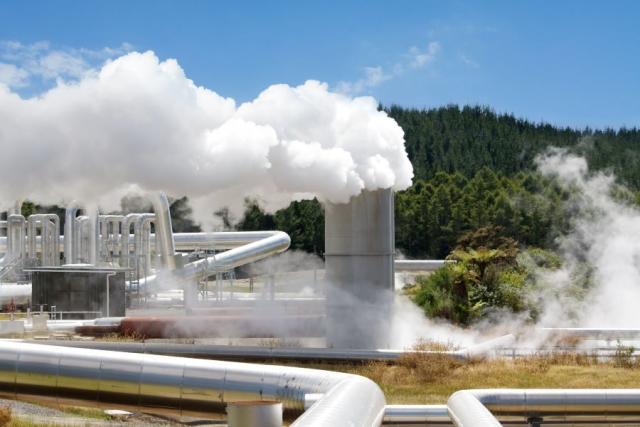
The U.S. Department of Energy's Geothermal Shot will target over 5 terawatts of heat resources in the U.S. to power communities. (Source: N. Minton / Shutterstock.com)
The U.S. Department of Energy (DOE) is seeking to lower the cost of enhanced geothermal systems (EGS) by 90% to $45 per megawatt hour by 2035 with its latest Energy Earthshot initiative.
The Geothermal Shot, announced Sept. 8, is targeting the more than 5 terawatts of heat resources in the U.S. to power communities. Capturing “even a small fraction” could power more than 40 million American homes, the DOE said in a statement.
The move is part of the Biden administration’s goals of 100% carbon pollution-free electricity by 2035 and net-zero emissions by 2050.
“The United States has a vast, geothermal energy resource lying right beneath our feet, and this program will make it economical to bring that power to American households and businesses,” U.S. Secretary of Energy Jennifer M. Granholm said in a statement.
“DOE’s Enhanced Geothermal Shot will move geothermal technology from research and development to cost-effective commercial adoption, helping energy communities and workers transition to producing clean energy for the future.”
EGS feature wells drilled at least 4,000 ft underground, extracting heat byway of fracture systems to which water is added through injection wells. Injected water is heated when it contacts the hot rock, returning to the surface via production wells. The heat extracted can be used to heat or cool homes and buildings, or to generate electricity.
However, conditions in these EGS reservoirs— where temperatures can reach 380 C or higher at deeper depths—can be harsh.
Besides the hot temperatures, rocks are hot and abrasive and the environment corrosive, the energy department explained. In some instances, there is insufficient fluid to carry the heat and limited pathways to conduct fluid. The Geothermal Shot plans to address the challenges by accelerating R&D and demonstrations to improve subsurface knowledge. It also seeks to improve well engineering designs.
The energy department’s latest geothermal investments include up to $165 million to transfer best practices from oil and gas to advance geothermal, $84 million to support four pilot EGS demonstration projects and $44 million to spur EGS innovations for DOE’s Frontier Observatory for Geothermal Energy Research field lab.
“Geothermal energy currently generates about 3.7 gigawatts of electricity in the United States, but a substantial amount of geothermal energy is not accessible with current technology,” the energy department said. “Research and innovation to advance EGS drilling, and engineering can unlock those resources and put new, clean electricity on the grid.”
The Geothermal Technologies Office’s multiyear program plan aims to deploy 60 GW of enhanced geothermal systems and hydrothermal resources, as well as the installation of 17,500 geothermal district heating installations and 28 million geothermal heat pumps nationwide by 2050.
Recommended Reading
Texas LNG Export Plant Signs Additional Offtake Deal With EQT
2024-04-23 - Glenfarne Group LLC's proposed Texas LNG export plant in Brownsville has signed an additional tolling agreement with EQT Corp. to provide natural gas liquefaction services of an additional 1.5 mtpa over 20 years.
US Refiners to Face Tighter Heavy Spreads this Summer TPH
2024-04-22 - Tudor, Pickering, Holt and Co. (TPH) expects fairly tight heavy crude discounts in the U.S. this summer and beyond owing to lower imports of Canadian, Mexican and Venezuelan crudes.
What's Affecting Oil Prices This Week? (April 22, 2024)
2024-04-22 - Stratas Advisors predict that despite geopolitical tensions, the oil supply will not be disrupted, even with the U.S. House of Representatives inserting sanctions on Iran’s oil exports.
Association: Monthly Texas Upstream Jobs Show Most Growth in Decade
2024-04-22 - Since the COVID-19 pandemic, the oil and gas industry has added 39,500 upstream jobs in Texas, with take home pay averaging $124,000 in 2023.
Shipping Industry Urges UN to Protect Vessels After Iran Seizure
2024-04-19 - Merchant ships and seafarers are increasingly in peril at sea as attacks escalate in the Middle East.




